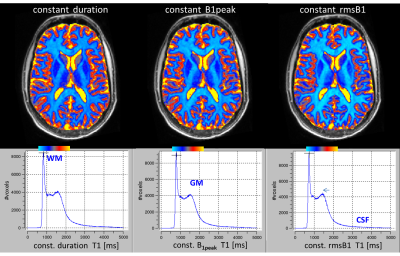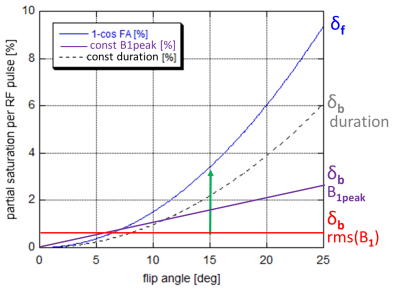Gunther Helms1
1Medical Radiation Physics, Clinical Sciences Lund, Lund University, Lund, Sweden
1Medical Radiation Physics, Clinical Sciences Lund, Lund University, Lund, Sweden
In brain T1 mapping by variable flip angles, we used the pulse length to control the pulse power and thus underlying magnetization transfer effects. The Ernst equation was followed with constant rmsB1, while schemes with constant peak B1 and constant pulse length deviated for higher flip angles.

Figure
3: The change in hue of the T1 maps (pseudocolor scale
600ms to 2200ms) and the whole-brain T1 histograms show the small, but
discernable shift to lower T1 estimates from constant duration (left), constant B1peak
(middle), to constant rmsB1 (right).

Figure
1: Sketch of the partial saturations of the bound pool imposed by the
RF pulse over flip angle, relative to the free pool (blue). The vertical scale is not known and thus arbitrary. Note the different
behavior at constant duration (grey) and B1peak (purple). The green arrow at 15° indicates the lower saturation of the bound pool
for the three cases, showing that inverse MT toward
the free pool is strongest for constant rmsB1 (red).
